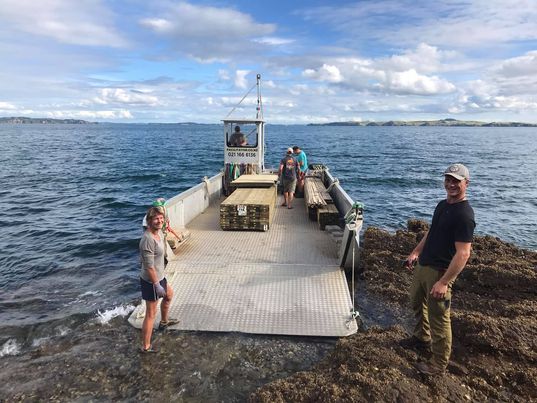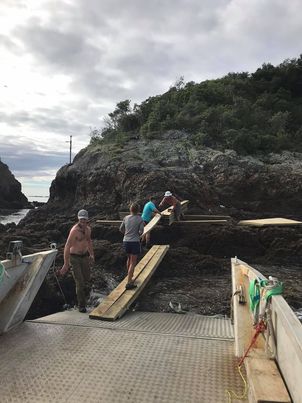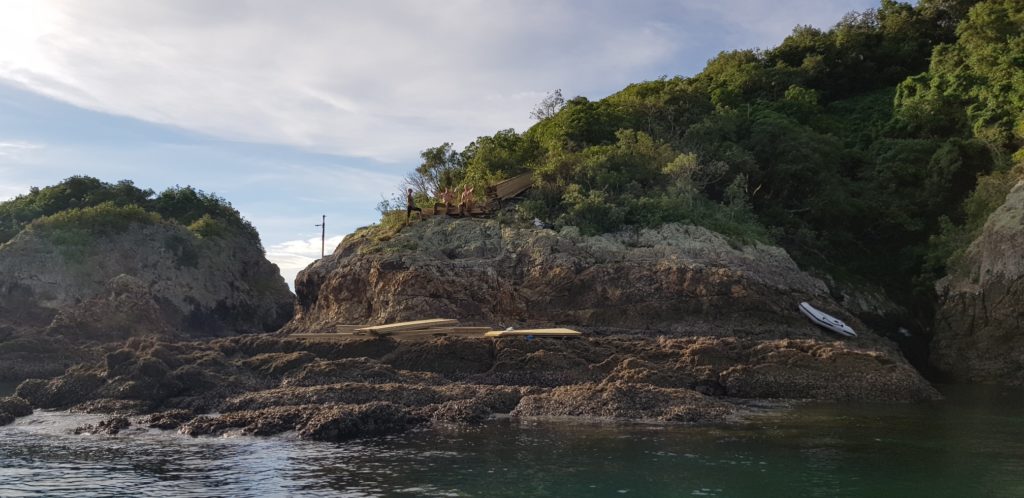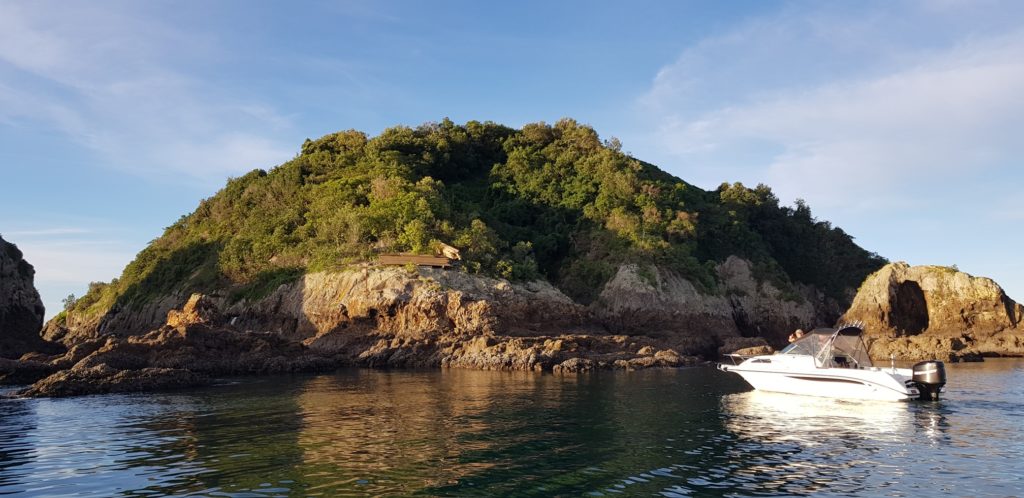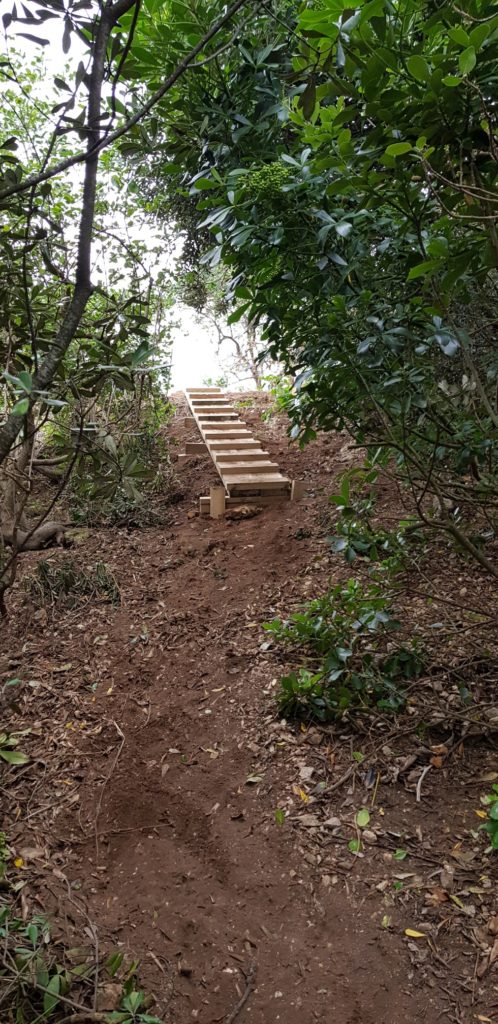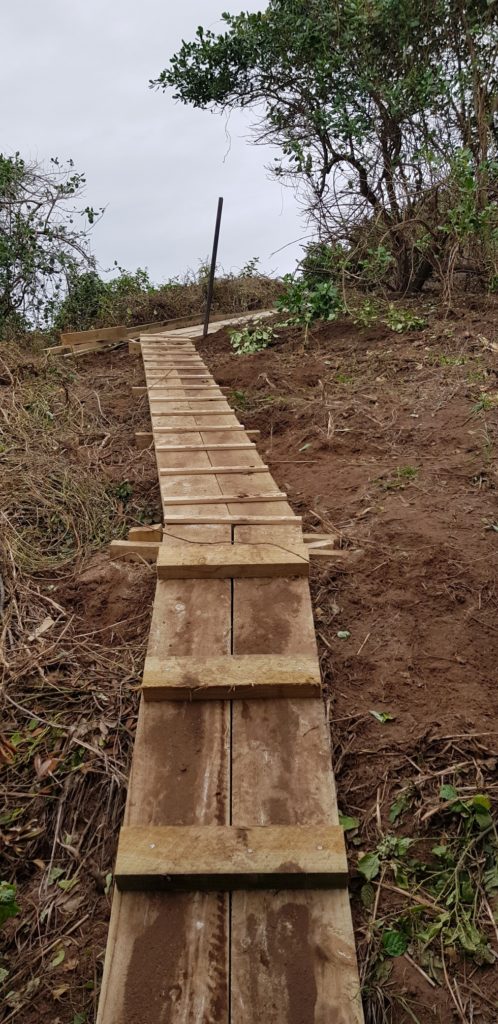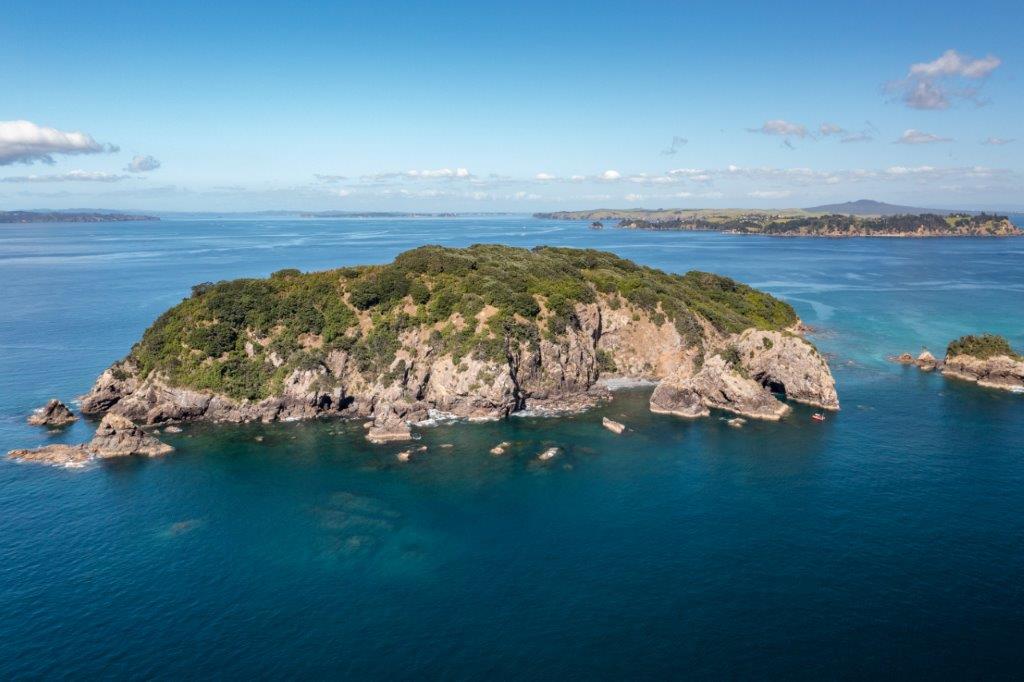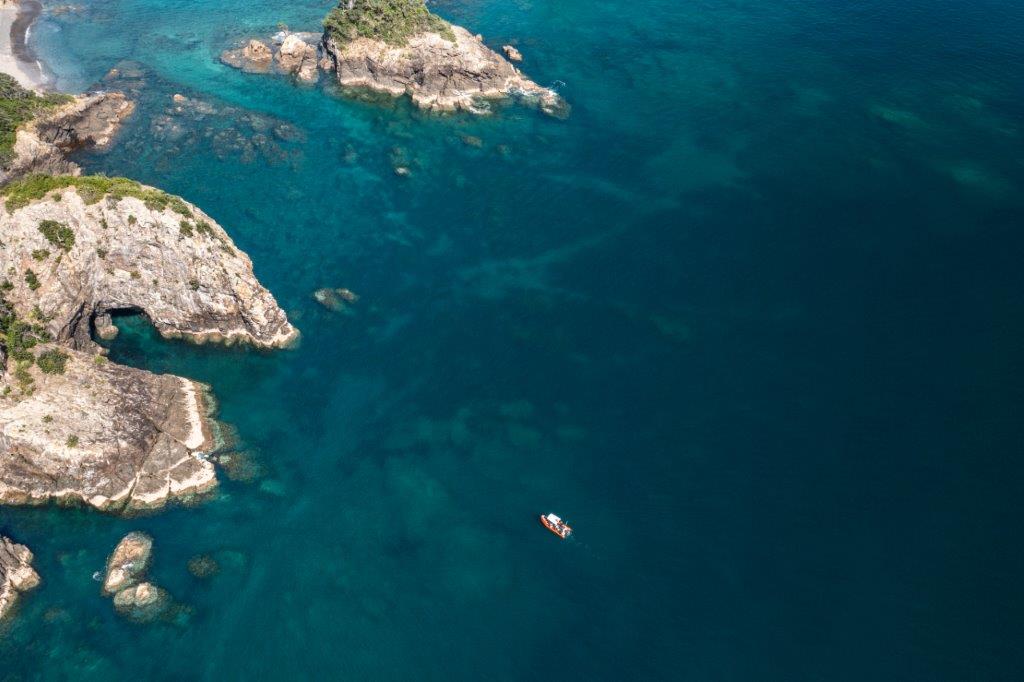The Noises hold a very special interest for seabird lovers. Being home to at least…
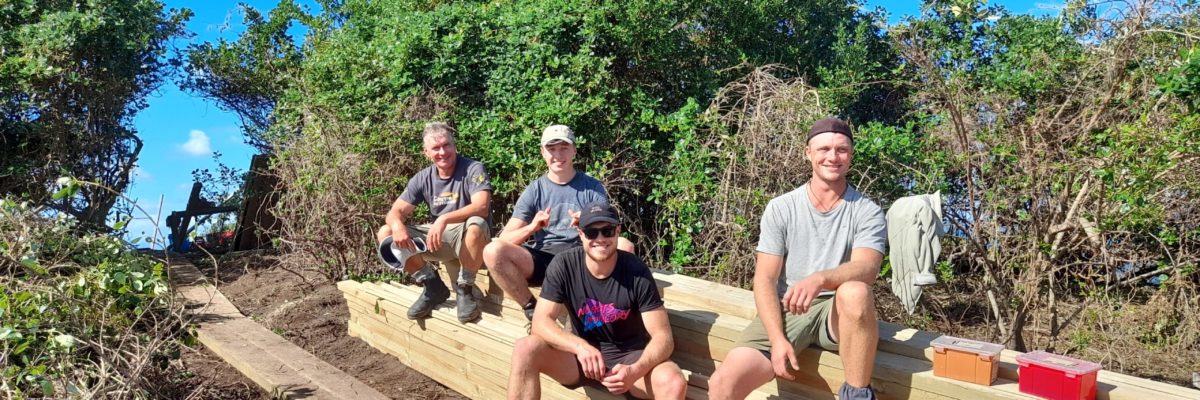
Ruapuke’s Long Awaited Boardwalk
It’s been years in the planning – and that pandemic didn’t help, setting efforts back a fair way – but the good news is, in April 2021, construction of the boardwalk on Ruapuke Island (aka Maria) finally got underway, thanks to Auckland Council, the Neureuter family and some super-fit friends and colleagues.
Famous for being the world’s first pest-free island, Ruapuke was cleared of rats in 1964. A tricky island to access at the best of times, it’s rocky and really only hospitable to the seabirds who breed there.
But sometimes humans need to land too, whether to access the small marine beacon at the top or to keep the voracious, fabaceous vine known as mile-a-minute at bay. With several species of petrels nesting on Ruapuke, including white faced storm petrels, northern diving petrels, fluttering shearwaters, grey faced petrels as well as penguins, the island is honeycombed with burrows, access is restricted to between mid-March and mid-May, so the birds can nest undisturbed. Which is why the construction of a boardwalk was deemed important – and not only to allow year-round access to the lighthouse, and the occasional weeding bee, but to give ornithologists opportunities to conduct vital bird surveys.
The Noises Island Trust is so grateful to Auckland Council for helping to get this project moving. Council supplied the building materials which Tim Hofmeister barged out. Aside from the generous provision of materials and providing some of the labour, Kerryn, Auckland Council’s Biosecurity Advisor also ran Rosie the rat catcher dog through the building materials before they were sent to Ruapuke.
Thanks too to Matt Rayner (Auckland Museum), Niklas Erikson (Auckland Council), and Zoe Neureuter’s son Kyle Darwin for unloading the barge. As for lugging the building materials up on the rocks and above the high tide mark, that was no mean feat.
“Landing was actually a breeze,” Zoe recalls with relief, “as it was a very calm day when we went out. Tim just lowered the barge ramp onto the rocks and we literally walked off carrying the lumber. But getting it up above the hide tide mark and into the bush line was a mission. Because the rocks aren’t even, and it was really hard finding balance and finding good footing with such heavy lumber.”
So it was a labour of love and a lot of sweat. “From the bush line up the steep track was just a grunt, one plank at a time with one person on each end. That first day Rod and I got up about 12 while my son Kyle and his friends Christy and Flynn Drysdale-Dunn [from Free the Tree Ltd, Waiheke based biosecurity and pest plant removal services] come out in the weekend and got the other 50 or so boards up, plus sheets of plywood and most of the 4 x 2s. I am fit but I was definitely out of breath each time we reached the top of that steep track. There’s no way Rod and I could have managed on our own without doing ourselves a serious injury.”
But it all got stacked, then it was time to build, and the design was Rod’s department. He reckons he’d always known how he wanted to construct it – he’d had a bit of time to think about it – so Rod took charge of imagining, ordering materials and packing the necessary tools.
A start was made on the boardwalk the day after the materials were deposited, and Zoe and Rod hauled only what was immediately needed up the track, because lumber is cumbersome. And for you wood enthusiasts out there, it was H4 10 x 2s, or if you’re a metric fan 200 x 50s. But unfortunately, the weather turned and later that day work was abandoned until the end of the week.
The team were back out on Saturday, joined by Kyle and workmates Christy and Flynn who carted all the rest of the timber up the steep track to the top of the island. Eternal gratitude to all the hands on deck, and praise be for scroggin, and the healing powers of Zoe’s Houhora cookies, which are like glorified high-energy Anzacs.
As with any bold endeavour, there was a bit of trial and error but the boardwalk now reaches the lighthouse. “It looks pretty professional too,” says Zoe, surprised that her brother could be so smart. “The next stage will see it extend out in a T-shape from the lighthouse and go down the other side to the bush. Rod even started work on a sleeping platform up by the lighthouse.”
FYI – the platform is intended for overnighting ornithologists when they’re doing seabird research, not for exhausted construction workers and weeders in need of a nap!
And talking of napping, not only did the workers spot a seal having a snooze on the rocks, the rest of the team slept soundly that night. Rod and Zoe’s bodies reminded them they’re not as young as they used to be – “yes there were some aches and pains” – while the younger ones, Kyle in his early 30s and Christy and Flynn in their 20s were definitely not about to admit to aches and pains, but rumour has it Christy and Flynn crashed for a good 12 hours on Ōtata that night.
An excellent effort by all, and when March rolls around, and the island can be accessed again, the project will be completed, but the main feeling today is delight. Everyone involved is so chuffed, not to mention puffed, to have made such a good start on the much-needed boardwalk. In the meantime, the various bird species can focus on the vital business of breeding and nesting and, come springtime, we can listen out for squadrons of healthy chicks and their proud parents.
Kia ora koutou to all who made this possible – Zoe, Sue and Rod Neureuter. Tim Hofmeister for the barge, Matt Rayner (Auckland Museum), Niklas Erikson (Auckland Council), Kyle Darwin, Christy and Flynn Drysdale-Dunn and John Mackenzie from Rakino Island’s Tree Nursery who popped over to lend his expertise. And big ups to all our friends at Auckland Council including Kerryn, and her dedicated dog Rosie, Tāmaki Makaurau’s finest four-legged rodent detector!

